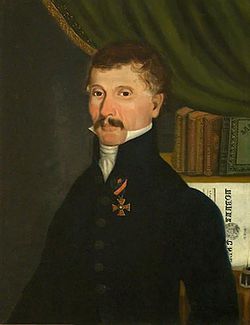Ancient times and Middle Ages



| Dates | Events |
|---|---|
| Before Common Era | Neolithic settlement; Scordisci, Romans and Celts are mentioned as rulers of the area |
| 1st quarter of 1st century CE | Romans found Taurunum, after a rebellion of Celts in 6–8 AD |
| 1st century CE | Pliny mentions Taurunum as the second most important settlement in Syrmia |
| 4th century CE | Taurunum appears on Tabula Peutingeriana, a map of Roman road network |
| around 440 | Huns destroy Taurunum; no further mentioning of a settlement for several centuries |
| 5th - 8th century | Ostrogoths, Lombards and Avars ruled the area |
| 795 | Franks conquer Syrmia; this was followed by colonization, including Zemun; however, it is unclear how the Francs called the settlement |
| 827 | Bulgarian Empire conquers Zemun and call it Земльн (Zemlyn - (town) made of earth) |
| end of 9th century | The Kingdom of Hungary conquers Zemun and call it Zimony |
| 1018 | Acquisition by the Byzantine Empire |
| 1071 | Kingdom of Hungary reconquers Zemun |
| 1096 | Crusaders of the First Crusade burn Zemun and kill 8,000 Zemuners; because they were routed at first, they call Zemun Malevilla (Evil Town) |
| 1128 | Kingdom of Hungary, under Stephen II, destroys Belgrade and use the masonry to reinforce Zemun fort |
| 1151 | Byzantines plunder and burn Zemun and reuse its masonry to reinforce Belgrade fortress; however, by the terms of peace treaty, Kingdom of Hungary retake Zemun |
| summer 1164 | Byzantines burn Zemun and kill most of its inhabitants |
| 1166 | Kingdom of Hungary retakes Zemun |
| 1241 | Mongols conquer the area for a short while |
| 1260 | First mentioning of Franciscans in Zemun |
| 1268 | Serbs acquire Syrmia as a dowry by Elizabeth the Cuman, Hungarian princess to king Dragutin; Serbs call the town Земун (Zemun) - the name it bears today |
| 1319 | Kingdom of Hungary conquers Syrmia, including Zemun |
| 1353 | Serbian emperor Dušan conquers Syrmia |
| Around 1370 | Reconquest of Syrmia by the Kingdom of Hungary |
| 1396 | Ottoman Turks plunder Zemun |
| 1412 | Zemun, along with some other towns, is acquired by Serbs, by the treaty between Serbian despot Stefan and Hungarian king Sigismund |
| 1434 | Kingdom of Hungary acquires Zemun as a dowry of Serbian despot Đurađ's daughter Catherine to Hungarian count Ulrich II of Celje |
| 1453 | Ottomans destroy the Franciscan church and convent in Zemun |
| Around July 10, 1521 | Ottomans burn and plunder Zemun; it remains under their control for almost 200 years, with very few written traces from this period |
| August 1521 | Ottoman sultan Suleiman the Magnificent spends the whole month in Zemun directing the siege of Belgrade |
| 1573 | First mentioning of an Orthodox church in Zemun |








